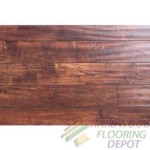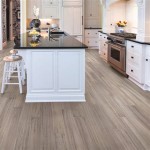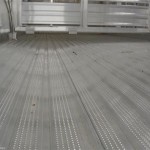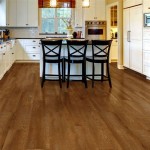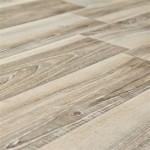An In-Depth Guide to Snap and Lock Flooring: Essential Aspects to Know
Snap and lock flooring, a revolutionary innovation in the flooring industry, has transformed the way homeowners and professionals alike approach flooring installations. With its ease of installation, durability, and versatility, snap and lock flooring has become a top choice for both residential and commercial applications.
What is Snap and Lock Flooring?
Snap and lock flooring, also known as floating flooring or click-lock flooring, is a type of laminate or luxury vinyl plank (LVP) flooring that features an innovative locking mechanism. Each plank has a tongue on one side and a groove on the other, allowing them to be snapped and locked together without the need for nails or glue.
Key Advantages of Snap and Lock Flooring
Easy Installation: Snap and lock flooring is incredibly easy to install, even for DIY enthusiasts. The planks simply click together, eliminating the need for complicated tools or professional installation.
Floating Installation: Unlike traditional flooring methods that require nails or glue to secure the planks to the subfloor, snap and lock flooring floats freely over an underlayment, providing greater flexibility and allowing for expansion and contraction.
Durability: Snap and lock flooring is highly durable and can withstand heavy foot traffic, making it suitable for both residential and commercial settings. The locking mechanism ensures a tight fit, preventing planks from shifting or separating.
Water Resistance: Many types of snap and lock flooring are water-resistant, making them ideal for areas prone to moisture, such as kitchens, bathrooms, and mudrooms. The sealed edges prevent moisture from seeping through, protecting the flooring from damage.
Versatility: Snap and lock flooring is available in a wide range of styles, colors, and textures, allowing homeowners to create a customized look for any room. From classic woodgrains to modern stone patterns, there is an option to suit every taste and decor.
Essential Considerations for Snap and Lock Flooring
Subfloor Preparation: Proper subfloor preparation is crucial for a successful snap and lock flooring installation. The subfloor should be level, smooth, and free of any debris or imperfections.
Expansion Gaps: It is important to leave expansion gaps around the perimeter of the room to allow for the flooring to expand and contract with changes in temperature and humidity.
Underlayment: Installing a moisture barrier and underlayment beneath the snap and lock flooring is highly recommended to provide sound insulation, moisture protection, and a more comfortable walking surface.
Transitions: When transitioning from snap and lock flooring to other flooring types, such as carpet or tile, appropriate transition pieces should be used to ensure a smooth and seamless connection.
Maintenance: Regular cleaning and sweeping will help keep snap and lock flooring looking its best. Avoid using harsh chemicals or abrasive cleaners, as they can damage the finish.

Essential Tools For Snap Lock Wood Flooring Learning Centerlearning Center

Essential Tools For Snap Lock Wood Flooring Learning Centerlearning Center

How To Install Lock Engineered Hardwood Flooring

8mm Anti Slip Snap Lock Wood And Stone Laminate Flooring China Waterproof German Technology Made In Com

Snap Together Flooring Easy Home Designing Unique Wood Floors

Lock Vinyl Plank Flooring A Comprehensive Guide Floorings

How To Install Laminate Floors

Guide To Installing Laminate Flooring Diy Family Handyman

A Beginner S Guide To Installing Vinyl Plank Flooring Dumpsters Com

In Flooring Systems Everything You Need To Know
Related Posts

